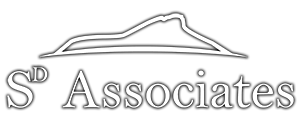Today is Independence Day. Porches are draped with bunting and flags are flying. 240 years and 2 days ago the Second Continental Congress declared independence from Great Britain largely as a protest to taxation without representation. The group behavior of declaration was the culmination of a succession of setting events that built a strong motivating operation for obtaining the reinforcement of independence. Those setting events included the punishment of unfair taxation that, in turn, prompted 22 years of increasingly effective collaborative problem solving that united disparate colonies between 1754 and 1776. Without that ‘behavioral cusp’ of collaboration, events might have taken a different turn.
There’s a connection between the behavior of groups and the behavior of individuals in the quest for independence. In the practice of applied behavior analysis we pay close attention to the teaching of cusp behaviors, behaviors that, once mastered, open the world of the learner up to a wealth of new learning and to increasing independence. First and foremost, we teach the learners we collaborate with to pay attention, and as with most skills, the teaching is a step-by-step process.
A central reason why our students come to us with constrained repertoires is that they have not learned to pay attention to, and sustain attention to, the stimuli in the world around them that lead to skill acquisition. The work begins with learning to remain in one spot oriented towards the teacher, to look, to listen and to have hands ready to respond. These are the cusp behaviors that enable sharing attention to the same stimuli with others, making increasingly complex discriminations and learning to speak through whatever mode works for that learner. These are the skills that make independence possible.
There are many behavioral cusps on the road to independence and all open the world of the learner to new experiences, new behaviors and an ever-growing array of consequences. Learning to initiate play and verbal behavior opens up the complexity of the social world. Parents know well what happens when a toddler learns to walk… that’s when they baby proof the house to make exploration safer. Once you can stay upright on a bike, the world unfolds in front of you. Young children learn to read and then read to learn. Learning what’s where on the piano keyboard is but the introduction to a vast literature and a world of auditory delights.
There are many behavioral cusps. The one we start with, learning to attend to what others do, show and say, is central. After that, every day is Independence Day!
